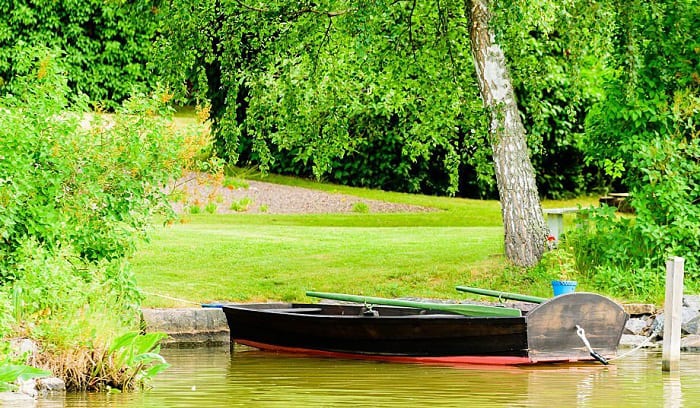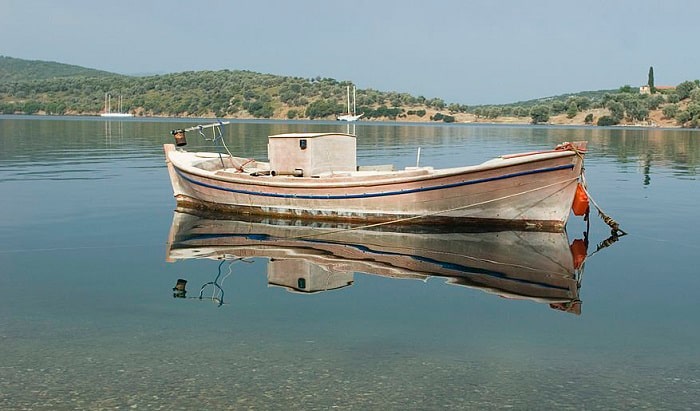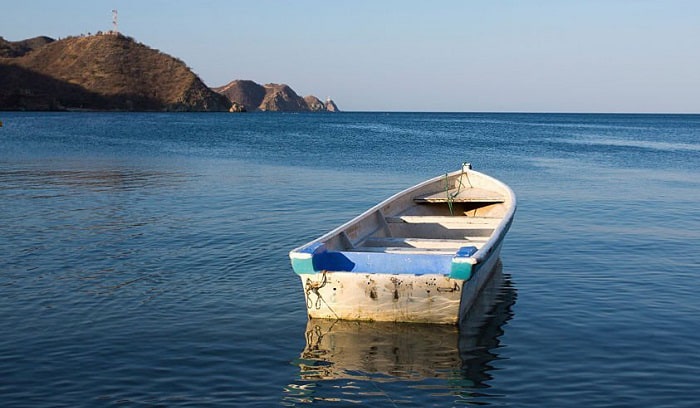There are different types of vessels for different activities, and flat bottom boats are excellent for fishing and hunting. But what are small flat bottom boats prone to do and what should we look out for when hunting from a boat or fishing?
Small flat-bottom boats are prone to capsizing and swamping, and many things could cause such boats to lose balance. Let’s get a better view of what we need to be cautious about.
Table of Contents
Flat Bottom Use
As the name suggests, flat-bottom boats have a relatively flat hull instead of the v-hull seen on other boats. Due to its characteristics, this watercraft is very popular for hunting, fishing, and utility work.
Some popular flat bottoms include the gondola, barges, and Jon boats. They are also commonly used for inland transport due to the quality of the hull, which allows access to many waterways that would otherwise be difficult to traverse.
Risks
The biggest risk associated with flat-bottoms is their being prone to capsizing and swamping, and the smaller the vessel, the higher the risk. Since these boats have low freeboards, it is easy for them to get wet from splashing water. It’s not getting wet that’s the problem, but the water leading to swamping is.
It is also easy for this type of hull to lose balance. Combined with some level of swamping, it becomes easy to turn over from small things that would otherwise be negligible on other vessel types.
This boat is also limited mostly to inland waters and is not a good choice for open waters like the sea, as it cannot handle rough or choppy waters. It may even be considered dangerous to use in such conditions.
Benefits
While increased susceptibility to capsizing may seem like a deal-breaker, the benefits still outweigh the risks. The most obvious benefit of using flat bottoms relates to their low draft.
This feature allows access to waters as shallow as 2 feet, enabling flat bottom boats to function in places where other types cannot go. Their flat hull also presents some benefits as well.
One of these is its unparalleled stability in calm waters. Because flat bottoms sit on top of the water, they are not affected by the current as easily, making them more stable. Their movement on the water is akin to gliding while in operation, making the ride smooth and speeding up more quickly.
Provided that the waters are calm, it will be easier to stay in place for fishing when using a flat bottom compared to other hull types. Combined with a low draft that allows for scouring most parts of a waterway, these vessels are ideal for both hunting and fishing.
Flat Bottom Precautions
There are many things you need to be aware of when out on a flat bottom boat hunting or fishing, but let us focus on just a few critical points and considerations.
- While this type of hull works well as a deer hunting boat, it is best to remember that flat bottoms are sensitive to overloading, so plan your load at all times.
- When bringing along a hunting dog on duck hunter boats, take only well-trained ones to ensure that they do not cause unnecessary movement.
- Turn off the engine, secure or anchor the vessel, and stay seated; do these things before firing your shot or releasing an arrow. Otherwise, capsizing may happen on shooting boats. When dealing with firearms, you need to be aware of laws relating to using and transporting guns as well.
- As stated above, turbulent waters are very bad for this type of hull, so be sure to avoid them at all times even when in inland waters such as whitewater rivers.
An exception to this is the river raft, as this type of flat bottomed boat specializes in such conditions. It’s also better to plan for situations where you do fall into the water due to capsizing (such as hypothermia).
Summary of Precautions
- Keep the onboard weight low and well-distributed
- Always watch out for overloading
- Only take well-trained hunting dogs on board
- Stop the vessel completely before shooting
- Always stay close to shore even in inland waters
- Avoid any rough or turbulent waters
- Take measures for hypothermia in case of capsizing
Conclusion
Now, you know all about flat bottom boats being prone to swamping and capsizing. With a better understanding of the risks, prevention is more manageable. Take the necessary precautions, and flat bottom boats can become one of the most important tools at your disposal.
If you know someone asking “what are small flat bottom boats prone to do?”, why don’t you throw this article their way to help them out. If you have any comments and suggestions, please drop them in the section below.
Remember to boat safely.

“I am James Harvey – founder of Boating Basics Online. It is established with the drive to help out first-time boaters, which are those desiring to explore their way through the water. So if you are new to boating, start from here with me. “



